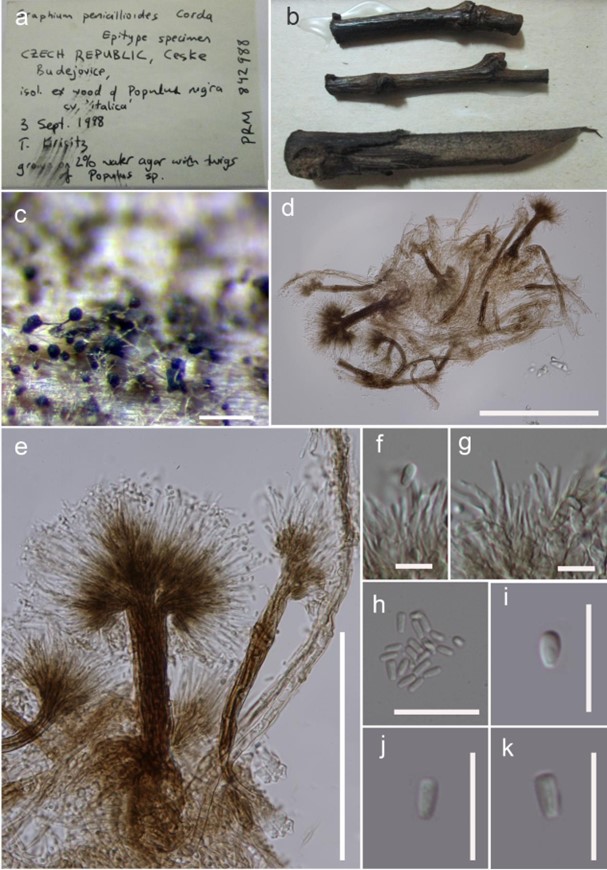Graphium Corda, Icon. fung. (Prague) 1: 18 (1837)
MycoBank number: MB 8398; Index Fungorum number: IF 8398; Facesoffungi number: FoF 02143; 59 morphological species (Species Fungorum 2020), 5 species with sequence data.
Type species – Graphium penicillioides Corda
Notes – Graphium species are plant pathogens and also found in soil, plant debris, woody substrates, manure, and polluted water (de Beer et al. 2013b, Maharachchikumbura et al. 2015, 2016b, Wijayawardene et al. 2017a). The genus was believed to have ophiostomatoid affinities (Goidànich 1935, Upadhyay 1981, Seifert & Okada 1993, de Beer et al. 2013b). Cruywagen et al. (2010), based on SSU and ITS sequence data, included eight described and seven undescribed species, including G. penicillioides, in Graphium sensu stricto. de Beer et al. (2013b) provided a description of Graphium sensu stricto and referred Graphium to the monophyletic family Graphiaceae (Microascales). Phylogenetically Graphiaceae, are distantly placed from the Microascaceae (Zhang et al. 2006, Spatafora et al. 2006, Schoch et al. 2009, Maharachchikumbura et al. 2015, 2016b). Members of Graphium are characterized by distinctive, erect, black synnemata, each bearing a single, terminal, 1-celled, hyaline conidium produced from phialidic conidiogenous cell with annellidic extensions.

Figure 112 – Graphium penicillioides (Material examined – CZECH REPUBLIC, PRM 842988, epitype). a, b Herbarium material. c Colony on the surface of the substrate. d, e Synnemata on the host surface. f, g Conidiogenous cells. h-k Conidia. Scale bars: c = 200 μm, d = 100 μm, e = 50 μm, f-h = 20, i-k = 5.
Species
